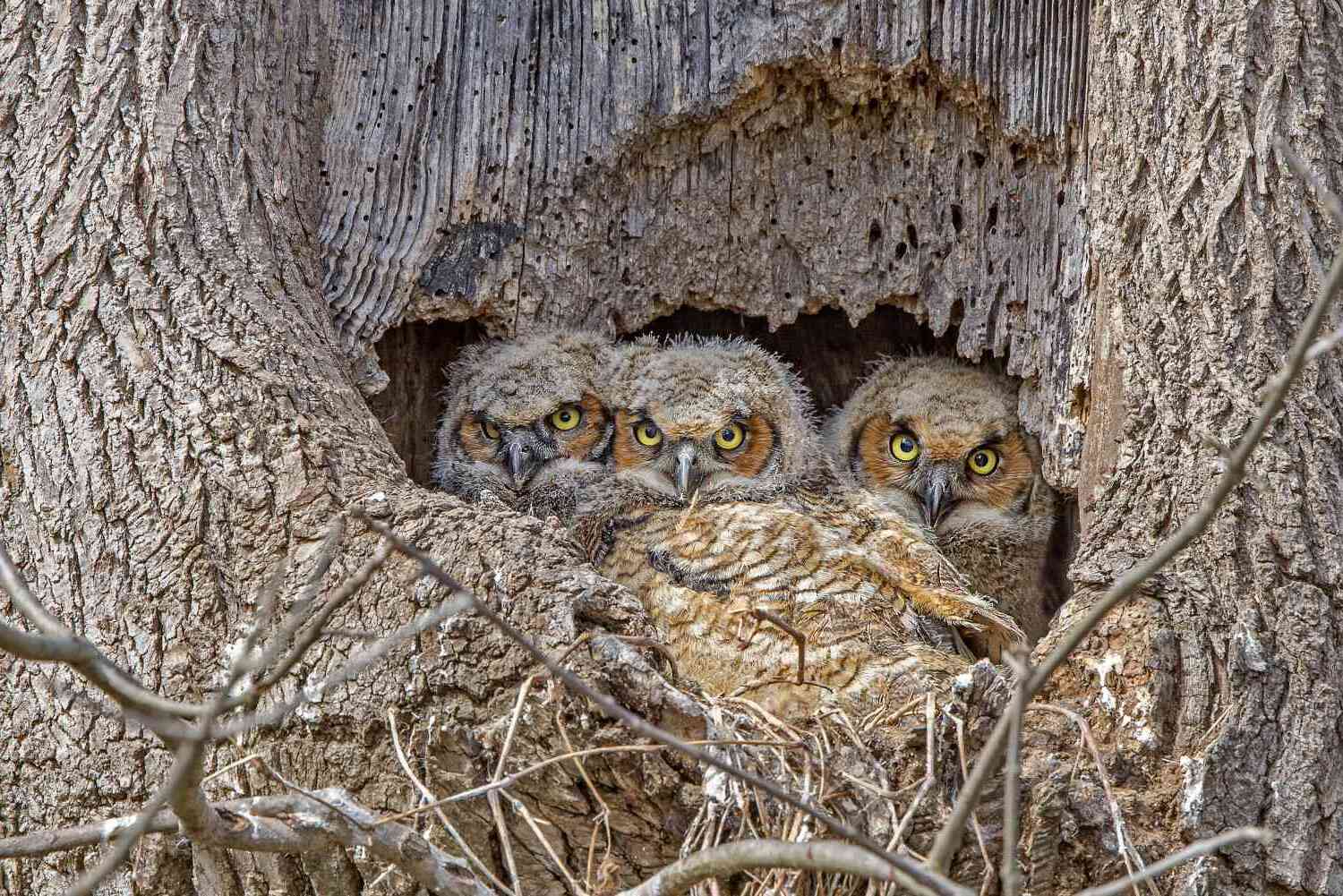
Ever wondered how animals protect themselves from predators? Nature has equipped creatures with incredible defense mechanisms. Some animals blend into their surroundings, becoming nearly invisible. Others use bright colors to warn predators of their toxicity. Some even play dead to avoid being eaten. From the tiny, color-changing chameleon to the skunk with its infamous spray, each species has unique ways to stay safe. Understanding these defense mechanisms not only fascinates but also helps us appreciate the complexity of the animal kingdom. Ready to learn more? Let's dive into 50 amazing facts about how animals defend themselves!
Key Takeaways:
- Animals have amazing defense mechanisms like camouflage, mimicry, and chemical warfare to protect themselves from predators. They also use smart behaviors, speed, and unique tricks to stay safe.
- Living in groups, using deception, and building defensive structures are other ways animals stay safe from predators. From wolves hunting in packs to birds creating intricate nests, animals have clever ways to protect themselves.
Camouflage: Nature's Disguise
Animals have evolved incredible ways to blend into their surroundings. This helps them avoid predators or sneak up on prey.
- Chameleons can change color to match their environment, making them nearly invisible.
- Octopuses can alter their skin texture and color to mimic rocks, coral, or sand.
- Leaf-tailed geckos look like dead leaves, complete with veins and spots.
- Snowshoe hares turn white in winter to blend with snow and brown in summer to match the earth.
- Stick insects resemble twigs, making them hard to spot among branches.
Mimicry: Imitating Others
Mimicry involves one species evolving to look or act like another. This can deter predators or lure prey.
- The viceroy butterfly mimics the toxic monarch butterfly to avoid being eaten.
- Some harmless snakes mimic the coloration of venomous snakes to scare off predators.
- The mimic octopus can imitate the appearance and movements of more dangerous sea creatures like lionfish and sea snakes.
- Certain moths have wing patterns that resemble the eyes of larger animals, scaring away birds.
- The cleaner fish mimics the appearance of a cleaner wrasse to get close to larger fish and feed on their parasites.
Chemical Warfare: Toxic Defenses
Some animals produce toxins or other chemicals to defend themselves from predators.
- Poison dart frogs have skin toxins that can paralyze or kill predators.
- Skunks spray a foul-smelling liquid to deter attackers.
- Bombardier beetles eject a boiling, noxious chemical spray from their abdomen.
- Monarch butterflies are toxic due to the milkweed they consume as caterpillars.
- Box jellyfish have venom potent enough to cause heart failure in humans.
Physical Defenses: Armor and Weapons
Many animals have developed physical traits to protect themselves or fight back.
- Armadillos have hard, bony shells that protect them from predators.
- Porcupines have sharp quills that can detach and embed in attackers.
- Pangolins roll into a ball, using their tough scales as armor.
- Elephants use their massive size and tusks to fend off threats.
- Crabs have strong claws for defense and fighting.
Behavioral Adaptations: Smart Moves
Behavioral adaptations can be just as effective as physical ones in avoiding danger.
- Meerkats take turns standing guard while the rest of the group forages.
- Opossums play dead to avoid being attacked by predators.
- Birds like the killdeer feign injury to lure predators away from their nests.
- Some fish swim in schools to confuse predators with their numbers.
- Cuttlefish use rapid color changes to communicate and startle predators.
Speed and Agility: Outrunning Danger
Sometimes, the best defense is a quick escape.
- Cheetahs can sprint up to 60-70 mph to catch prey or evade threats.
- Gazelles use a bounding leap called stotting to show predators they are fit and not worth chasing.
- Hares can run in zigzag patterns to evade predators.
- Flying fish can leap out of the water and glide to escape underwater threats.
- Dragonflies are agile fliers, able to change direction quickly to avoid being caught.
Unique Defense Mechanisms: Odd but Effective
Some animals have truly unique ways of protecting themselves.
- Sea cucumbers can eject their internal organs to entangle and confuse predators.
- Horned lizards squirt blood from their eyes to deter attackers.
- Hagfish produce large amounts of slime to clog the gills of predatory fish.
- Pufferfish inflate their bodies to appear larger and more intimidating.
- Electric eels generate electric shocks to stun predators and prey.
Social Defenses: Strength in Numbers
Living in groups can provide safety through collective vigilance and coordinated defense.
- Wolves hunt in packs, allowing them to take down larger prey and defend against threats.
- Ant colonies work together to protect their queen and young.
- Bison form protective circles with their young in the center when threatened.
- Dolphins use coordinated movements to confuse and fend off sharks.
- Bees swarm to protect their hive from intruders.
Deception: Tricking Predators
Some animals use deception to avoid being eaten.
- The false eyespots on butterfly wings can confuse predators about which end is the head.
- Some fish have markings that look like larger fish to scare off attackers.
- The mimic octopus can change its shape to look like more dangerous animals.
- Certain birds mimic the calls of other species to mislead predators.
- The lyrebird can imitate the sounds of other animals and even machinery to confuse threats.
Defensive Structures: Built for Safety
Some animals create structures that provide protection from predators.
- Beavers build dams and lodges to create safe habitats.
- Termites construct large mounds with complex tunnels to protect their colony.
- Birds like the weaver bird create intricate nests that are hard for predators to access.
- Hermit crabs use abandoned shells to protect their soft bodies.
- Ants build underground nests with multiple chambers and escape routes.
Nature's Incredible Defenses
Animal defense mechanisms are truly fascinating. From the camouflage of the chameleon to the venom of the jellyfish, these adaptations showcase the incredible ways creatures survive in the wild. Mimicry helps some animals avoid predators by looking like something else, while others use speed or armor for protection. Even the smallest insects have unique ways to stay safe, like the bombardier beetle that sprays boiling chemicals at threats.
Understanding these defenses not only highlights the diversity of life on Earth but also inspires awe at the ingenuity of nature. Next time you see a porcupine or a skunk, remember the amazing strategies they use to stay safe. These facts remind us of the complexity and beauty of the natural world, encouraging us to appreciate and protect it.
Frequently Asked Questions
Was this page helpful?
Our commitment to delivering trustworthy and engaging content is at the heart of what we do. Each fact on our site is contributed by real users like you, bringing a wealth of diverse insights and information. To ensure the highest standards of accuracy and reliability, our dedicated editors meticulously review each submission. This process guarantees that the facts we share are not only fascinating but also credible. Trust in our commitment to quality and authenticity as you explore and learn with us.


